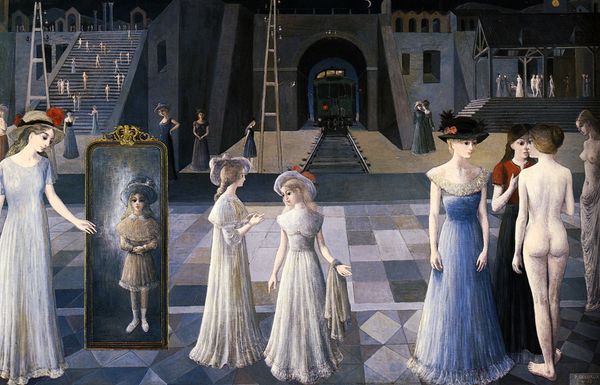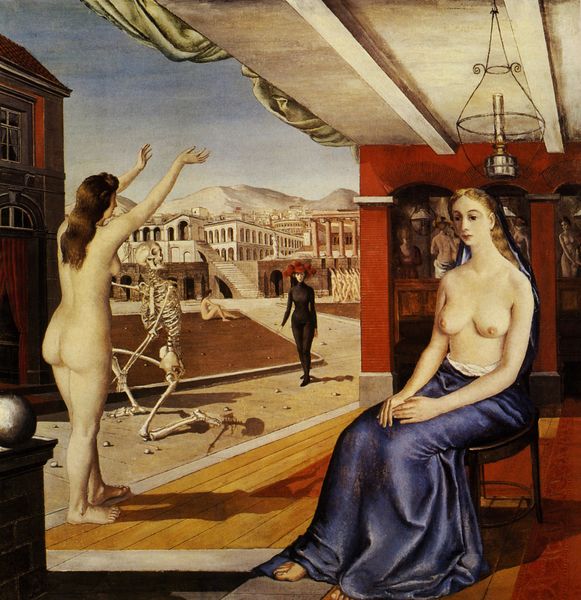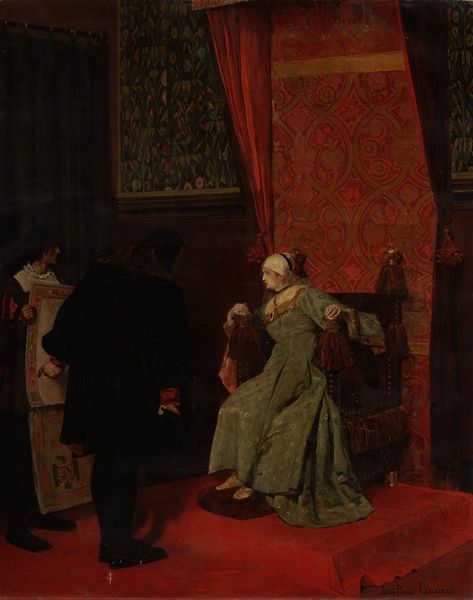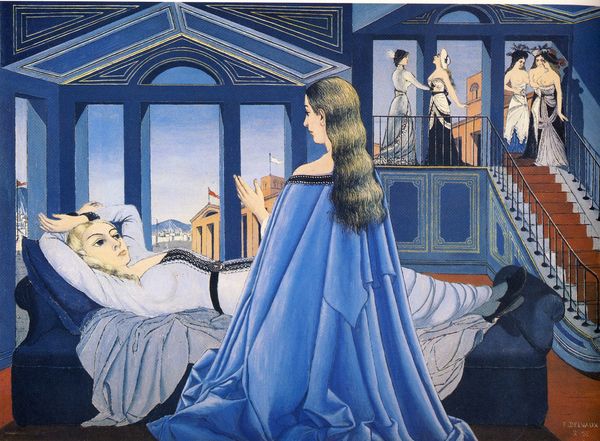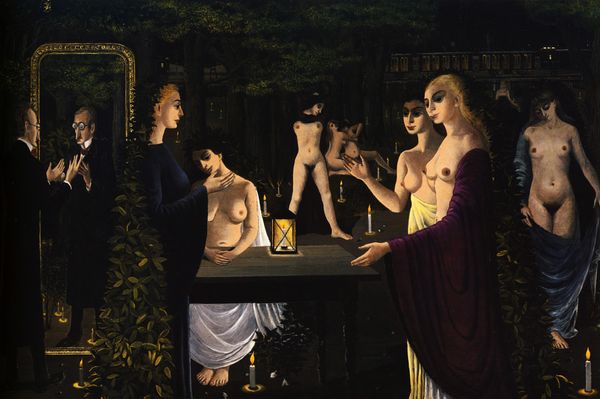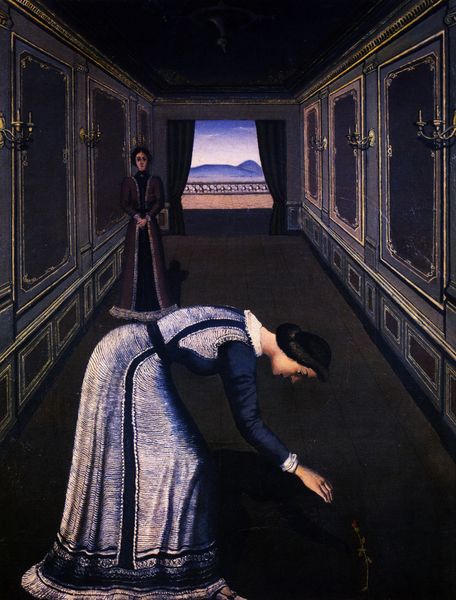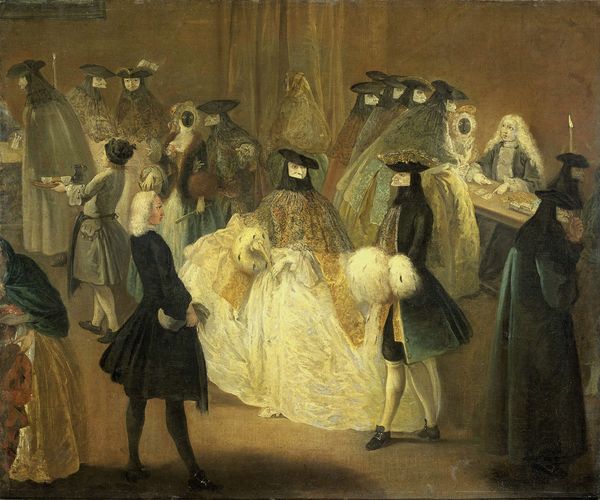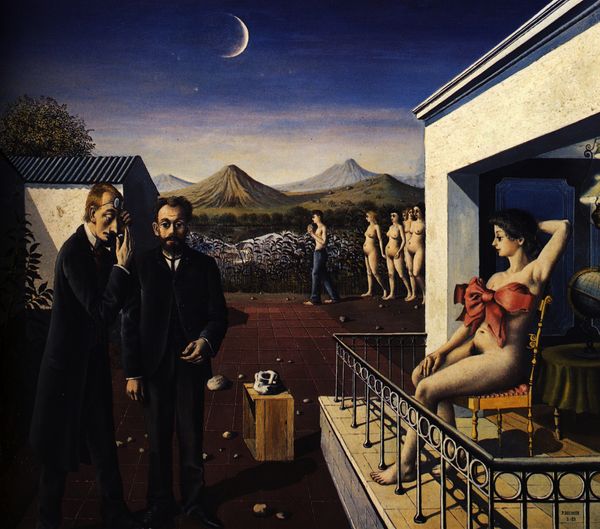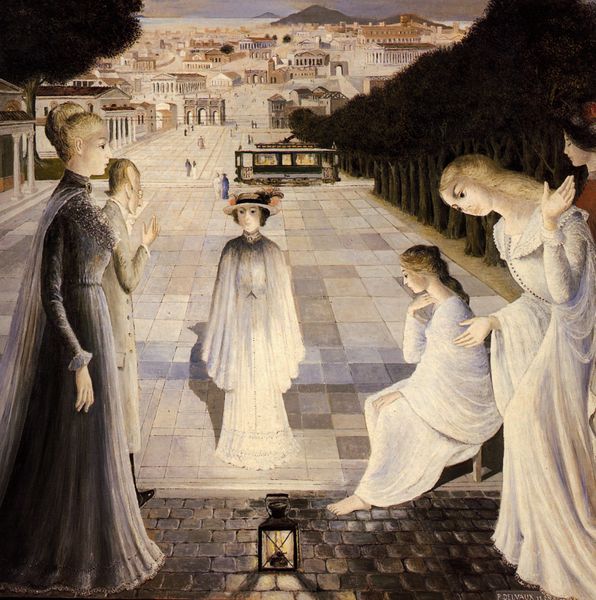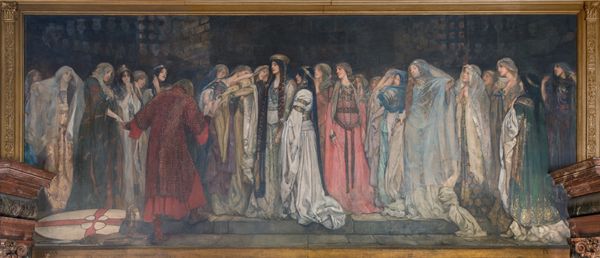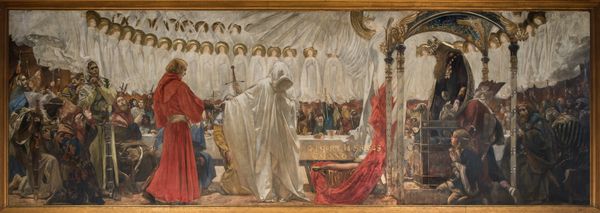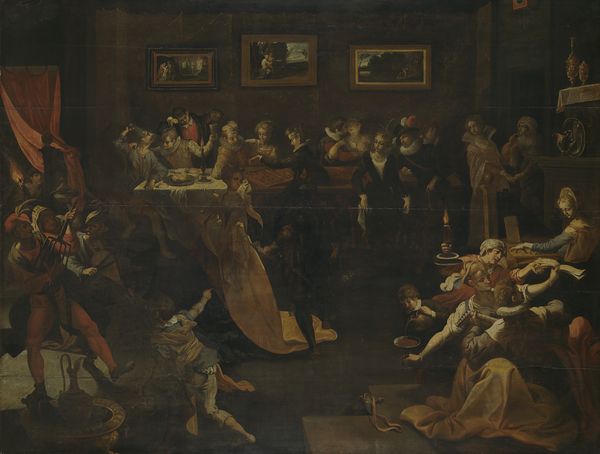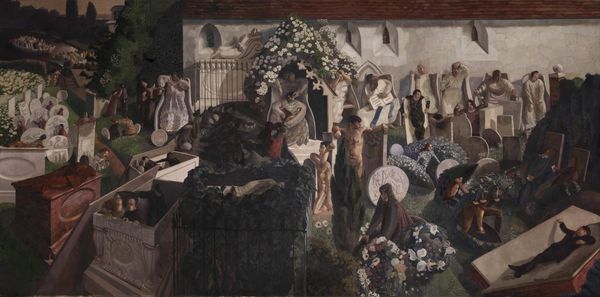
painting, oil-paint
#
allegory
#
narrative-art
#
painting
#
oil-paint
#
cityscape
#
genre-painting
#
surrealist
#
nude
#
surrealism
Dimensions: 200 x 240 cm
Copyright: Paul Delvaux,Fair Use
Editor: Here we have Paul Delvaux’s “The Musee Spitzner,” painted in 1943 using oil. The combination of classical elements with these… frankly, bizarre juxtapositions creates this sense of unease. How do you interpret this work? Curator: I see a powerful statement on the male gaze and its relationship to knowledge and control, especially poignant considering it was painted during wartime. The skeletal figure and the clinical, museum-like setting hint at a dissecting of the female form. Do you notice how the women within the space seem unaware or unaffected by the external male observation? Editor: That's a fascinating point. I hadn’t considered the male gaze so explicitly, but now I see the implied power dynamic. Why do you think the women seem so detached? Curator: Consider the Surrealist movement, which Delvaux aligned with. It was heavily influenced by psychoanalysis and often explored themes of the subconscious and the irrational. The women's detachment might reflect the objectification inherent in the male gaze, rendering them passive figures in a male fantasy. What do you make of the stark contrast between the figures inside and the ones observing outside? Editor: I guess the group of men looking in represent some kind of scientific establishment, while those inside are frozen in some strange dreamlike reality. So the contrast is the observer and the observed… Curator: Exactly. And the Musée Spitzner itself, which was a museum of anatomical curiosities, speaks to the idea of the body as spectacle and the inherent voyeurism involved in its study. The painting could be seen as a critique of how women’s bodies have historically been medicalized and objectified, framed as spectacle for largely male consumption. Editor: This is quite an unsettling painting, but seeing it through that critical lens really brings forward some powerful commentary. Thanks. Curator: Absolutely. Art often challenges us to confront uncomfortable truths about societal power dynamics. Examining through intersectional perspectives is one tool for seeing the structures around us.
Comments
No comments
Be the first to comment and join the conversation on the ultimate creative platform.
